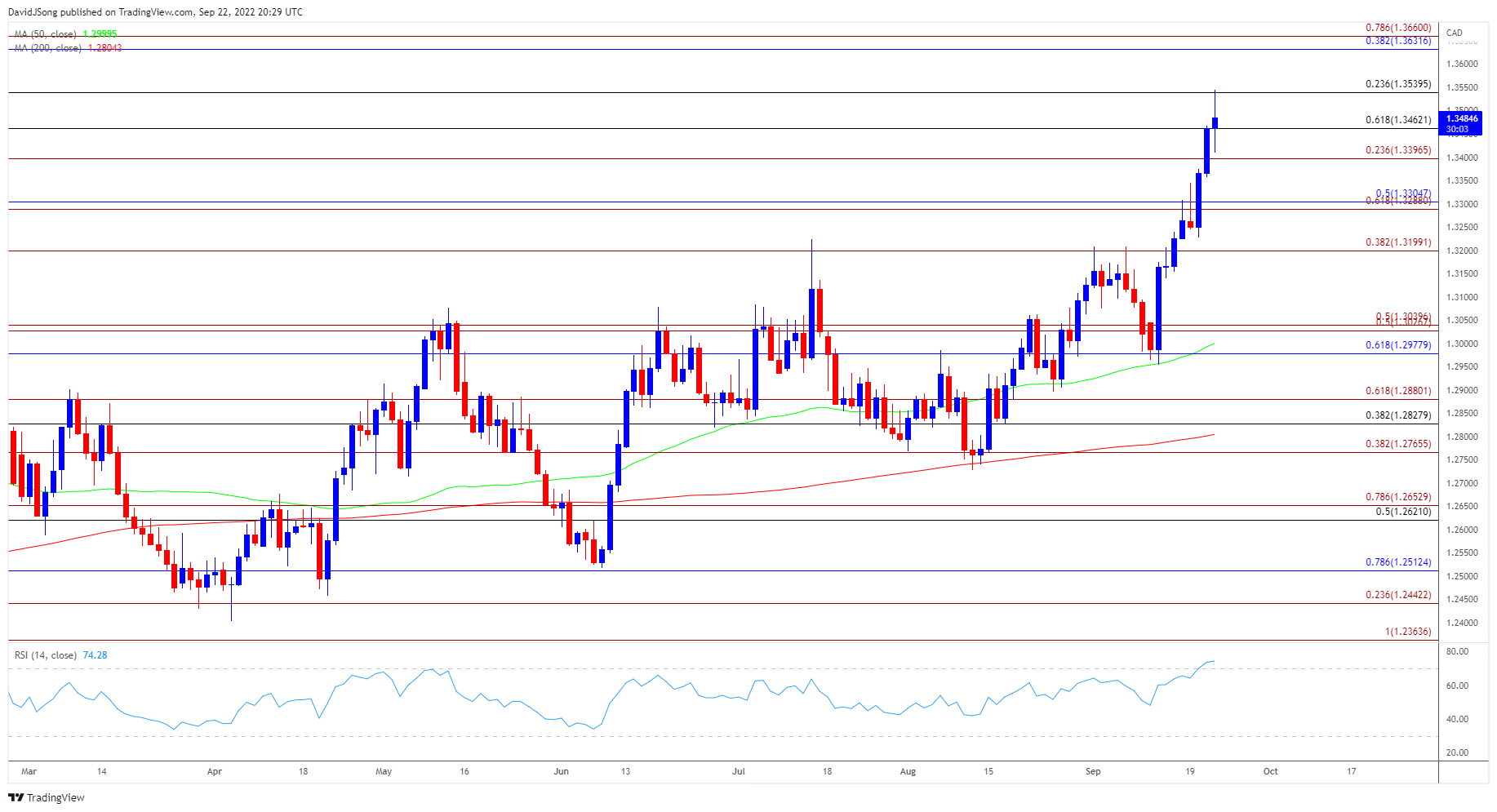Canadian Dollar Talking Points
USD/CAD clears the November 2020 high (1.3371) as it extends the advance following the Federal Reserve interest rate decision, and the exchange rate may attempt to test the July 2020 high (1.3646) as the Relative Strength Index (RSI) climbs into overbought territory for the first time this year.
USD/CAD Rally Pushes RSI Into Overbought Zone for First Time in 2022
USD/CAD trades to a fresh yearly high (1.3544) as it extends the advance from the 50-Day SMA (1.2999), and the exchange rate may continue to carve a series of higher highs and lows as long as the RSI holds above 70.
As a result, USD/CAD may continue to track the positive slope in the moving average as the Federal Open Market Committee (FOMC) retains its current approach in combating inflation, and the Greenback may continue to outperform its Canadian counterpart over the near-term as the Fed’s Summary of Economic Projections (SEP) show a steeper path for US interest rates.
In turn, USD/CAD may continue to trade to fresh yearly highs ahead of the next Bank of Canada (BoC) interest rate decision on October 26 as the FOMC pursues a restrictive policy, and a further advance in the exchange rate is likely to fuel the tilt in retail sentiment like the behavior seen earlier this year.

The IG Client Sentiment report shows only 30.45% of traders are currently net-long USD/CAD, with the ratio of traders short to long standing at 2.28 to 1.
The number of traders net-long is 14.88% lower than yesterday and 1.20% lower from last week, while the number of traders net-short is 13.80% lower than yesterday and 2.60% lower from last week. The decline in net-long position comes as USD/CAD trades to a fresh yearly high (1.3544), while the drop in net-short interest has done little to alleviate the crowding behavior as 32.91% of traders were net-long the pair earlier this week.
With that said, USD/CAD may continue to track the positive slope in the 50-Day SMA (1.2999) as it extends the rebound from the moving average, and the exchange rate may attempt to test the July 2020 high (1.3646) as long as the RSI holds in overbought territory.
Introduction to Technical Analysis
Market Sentiment
Recommended by David Song
USD/CAD Rate Daily Chart

Source: Trading View
- USD/CAD trades to a fresh yearly high (1.3544) as it extends the series of higher highs and lows from earlier this week, with the advance from the 50-Day SMA (1.2999) pushing the Relative Strength Index (RSI) into overbought territory for the first time in 2022.
- The bullish price action in USD/CAD may persist as long as the RSI holds above 70, but need a close above the 1.3540 (23.6% retracement) region to bring the 1.3630 (38.2% retracement) to 1.3660 (78.6% expansion) area on the radar, which lines up with the July 2020 high (1.3646).
- However, failure to close above the 1.3540 (23.6% retracement) region along with a move below 70 in the RSI may lead to a pullback in USD/CAD, with a push below the 1.3400 (23.6% expansion) handle raising the scope for a move towards the 1.3290 (61.8% expansion) to 1.3310 (50% retracement) area.
Trading Strategies and Risk Management
Becoming a Better Trader
Recommended by David Song
--- Written by David Song, Currency Strategist
Follow me on Twitter at @DavidJSong






